The teapot is a necessary teaware for tea. Whether you are going to have tea alone or enjoy with your friends, you need the right teapot to experience the real taste of tea.
Worthing to know, the teapot is different from the kettle, even most of the time, they named the same. Numerous kettle is electronic and mainly use for boil water; And the teapot only for brewing, they are not suitable hearting by the fire directly except the metal ones.
Of course, there are some cases making tea with the kettle. Personally, I prefer to put the tea bricks into the kettle with water, boiling it minutes, make the tea more aromatic.
Functions of Teapot
You may ever feel that the tea taste is different between brewing with a teapot and a mug, and don’t know why the simple teapot can make the tea taste better. That’s because the design of it is full of wisdom.
Brewing
Brewing, no doubt is the primary function of a teapot. The same as Gaiwan, teapot also has a cover. The sealed interior space makes the tea heated better. But the difference is, the spout of teapot can flows some air, reduce the pressure, and keep the tea from braising yellow.
Some teapots have a detachable infuser inside, make the brewing and the clean job becomes more comfortable.
Temperature Controls
Even Though some cups with lids, why the tea they brewed taste not good? The problem comes from the temperature controls.
When we are going to make some teas, we will decide the brewing time according to the types of tea and pour all out when times up. The tea leaves left in the teapot will not further heating, and the fresh air flows in makes them cool down.
In the case of the cups, the tea leaves will be heated by the hot water until you finish drinking. The taste of the tea will change by continuous, excessive cooking. Especially the non-fermented green tea, the infusion color will get dark-yellow, tasting like the tea stain.
The material of the teapots also influences the temperature control performance. Such as metal, which has high thermal conductivity, they can make the tea cool down faster; And the ceramics and porcelain teapots with low thermal conductivity can keep the tea warm longer.
Filtration
Except for the detachable infuser, the traditional style teapots also got a certain filtration effect. Such as the English teapots, which got a long spout, so that the loose leaves can not flow out with the tea. And in some Chinese teapots, it has some tiny holes inside the teapot, which can filter the loose leaf teas.
Compared with the tea infuser, the tiny holes filter is easy to block by the tea leaves, then need a tea needle to dredge. But if you are going to make the splintery tea such as CTC black tea, better to pick a teapot with infuser.
Improve Water Quality
The quality of water(hardness) also affects the taste of tea. Such as the cast iron teapot and the silver teapot, which will release a small amount of metal ion, reduce the hardness of water, and make it sweeter. And the metal ion also got a certain bactericidal performance.
Therefore, many people like to cook dark tea with metal teapots, which not only can heat by the fire directly, but help to destroy the bacteria in tea which growth by the long-term fermentation.
Types of Teapots
Teapots typically classified according to the different materials, and each type has its pros and cons.
Glass Teapot
The glass teapot is no doubt the most beautiful and fashionable one. Especially when you make some herbal teas, the dried flowers bloom in the water, release the colored extracting solution slowly, and you got all this from your eyes, though the glass teapot. Also, it cost less.
Pros
- Attractive appearance
- Can appreciate the brewing process through the transparent body
- Reasonable price
Cons
- Fragile; It is liable to break up due to a collision, or a sudden increase in temperature
Read more about Glass Teapot
Cast Iron Teapot
In some Chinese traditional tea houses and food stalls, the shopkeeper uses a big iron teapot boiling tea for hosting, due to the massive traffic. Because the iron teapots can heat by the fire directly, and with a large capacity, make more tea in a short time. And in Japan, cast iron teapots, which named Tetsubin, are famous, but they only for boiling water but not for brewing tea.
Pros
- Can heat by the fire directly
- Large capacity
- Reasonable price
Cons
- Easy rust
- Heavy
Read more about Cast Iron Teapot
Porcelain Teapot
Porcelain teaware was spread with tea from China to Europe, and with the continuous improvement into the English teaware with western characteristics. Whether the Chinese or English porcelain teapot, they both have a beautiful glaze, the famous one is blue and white porcelain teapot.
Porcelain teapot made from clay, just like the ceramic teapot, got various designs due to the high plasticity. But what is different from ceramic, porcelain teapot was glazed and got a high airtightness, not easy to gather tea stain and absorb the tea taste, also easy cleaning. And it has a low thermal conductivity, so it does well at heat preservation.
Pros
- Attractive appearance
- No effect on the taste of tea
- Easy to clean
- Can collect as art or decoration
Cons
- Fragile
Clay Teapot
Ceramic and porcelain are not the same, even they both made from clay. Clay teapot been sintering at different temperatures and without glazing, so it looks very simple and primal.
Even though it looks so lame, clay teapot got numerous fans. In most of the tea lovers’ minds, clay teapot got an aged appearance, match the feeling of tea, a primal forest style. Also, without glaze, lots of pores full on the body, make excellent breathability, and good at temperature controls, easy to extract real taste of tea.
The price range of clay teapot is wide, so as the quality. Low-quality clay teapots may come with deckle edges, while the high-quality ones are very smooth.
Pros
- Excellent temperature controls performance
- Extract the taste of tea adequately
Cons
- Simple appearance
- Hard to clean
Yixing Clay Teapot
Yixing clay teapot is a kind of clay teapot, but I think it worth discussing separately. Yixing teapot made from Yixing clay(purple sand), also known as Purple Clay Teapot, which originated in Yixing city, China.
Purple sand is rarer than ordinary clay, and better performance, the pores on the body are more uniform and tiny.
These tiny pores make the clean job harder, easy to gather tea stain, but that is the primary reason loves by the tea lovers. Is that strange, right?
Each time brewing tea with Yixing clay teapot, the tea taste will leave behind in the tiny pores. After a long time, even though you brewing without tea leaf but water, the water also tastes like tea. Therefore, Yixing clay teapot lovers only use one teapot for one type of tea, so that the taste will not blend, or make the tea more flavoring.
Due to the low thermal conductivity, you can hold it in your hands and will not get scald, even though it is full of hot water. So people love to hold the body but not the handle when pouring tea. Time flows, under the friction from hands and water, the Yixing teapot will get a smooth and shiny surface, Chinese people called it “Baojiang” (wrapped slurry).
Tea lovers called the teapot Baojiang process raise teapot. To raise a satisfying Yixing clay teapot successfully is a matter of pride for tea lovers.
Pros
- Excellent temperature controls performance
- High collection value
Cons
- Hard to clean
- Hard to maintain
- Expensive
Copper Teapot
The copper teapots classify in two types, one just like the iron teapot, large capacity, for boiling water or cooking tea; Another is the ordinary Moroccan Teapots, which made from copper, only for brewing.
Compared with cast iron teapots, copper teapots have a brighter appearance and better thermal conductivity. Even though copper is metal and it will take oxidation, it only lays a protective film on the surface, the gloss may reduce, but it will not grows the ugly rust like an iron teapot. But it once contacts the sulfides in the air, and it will get the patina.
Pros
- Attractive appearance
- Makes the tea cool down faster
- Reasonable price
Cons
- Heavy
- Hard to maintain
Silver Teapot
The silver teapot is popular in southern China and the European nobles. As a precious metal, silver has a considerable value itself. And due to the low hardness, silver is easy to carve out wonderful designs than copper or iron.
The silver teapot will release some silver ion at a high temperature, which can exchange with calcium and magnesium carbonate compounds in the water, reduce the water hardness, and improve the quality. Also, it can kill the bacteria in tea.
But silver is a kind of active metal, easy to get a chemical reaction with the sulfur in the air, turns black, and broke the appearance.
Pros
- A store of value
- Delicate appearance
- Certain sterilization and improve the water quality effect
Cons
- Hard to maintain
- Easy out of shape
Read more about Silver Teapot
Stainless Steel Teapot
Stainless steel teapot got a modern style, and most of them are with a tea infuser, famous for their low cost, convenience, and simple style. It is very suitable for matching the minimalism interior design, and most of the Moroccan teapots are made from stainless steel.
However, in terms of tea-making performance, the stainless steel teapot does not have any particular pros, the only one is that it can heat directly by the induction cooker. Therefore, the stainless steel teapot is not very popular among tea lovers.
Pros
- Low cost
- Easy to maintain
Cons
- The overly modern appearance is incompatible with the tea culture.
Jade Teapot
The jade teapot is not a common teaware, because it cost a lot. It said that jade has the same effect as crystal, which can radiate energy and influence the magnetic field, beneficial to human bodies, but without any substantial evidence from science.
To as a teaware, I prefer to regard jade teapot as a kind of art, after all, it is too beautiful and too expensive.
Pros
- Excellent appearance
- High collection value
Cons
- Expensive
How To Pick A Right Teapot
Capacity
When you are going to buy a teapot, the capacity is always the first thing you should consider. Imagine you like to drink alone or prefer to share with your friends.
If more time you share the tea fun with your friends, the teapot in 150ml to 200ml is the best choice. One round brewing can serve about 3 people. And the over 500ml capacity teapots, are suitable for parties.
While if you prefer to enjoy tea alone, a teapot about 150ml is nice. In this way, the tea leaves would not cook in hot water for too long time. Especially the brewed green tea, should not be placed for too long, or taste goes bad and getting waste.
Types of Tea
Choose the teapot according to the types of tea you like. If you are a fan of herbal tea, a glass teapot is the best choice; Green tea and black tea are more suitable brewing in porcelain teapot; And for dark tea such as pu-erh tea, Yixing clay teapot is always the best.
Design
Teapots’ designs in various styles, the tea brewing performance of them also different. Take notice at the following points:
- The shape of the body. Try placing the teapot flat on the table, push it gently to see if it will shake. Most of the teapot shape spherical, but there are some cube shapes are more stable. There is a potential scald danger if the teapot overturned due to unstable.
- The teapot opening. Check the opening, whether match the cover perfectly. The fragrance of tea may lose from the gap between the opening and cover, and the tea can not heat well.
- Spout. The design of spout influences a lot. Whether the spout is long or short, it should make the flow smooth, stable, and not drift. Tea flows out from a short spout is hard to control, easy to make the tea overflow off the cup; The tea flows out from long and thin spout flows slow, the temperature of tea may cool down, the time of tea leaves steeped in the teapot longer.
- Filter. Teapot filters the tea leaves in two ways. One is with a detachable infuser inside, and the other is with some small holes inside the teapot. No matter in which way, consider if it is easy to solve the block problem when brewing.
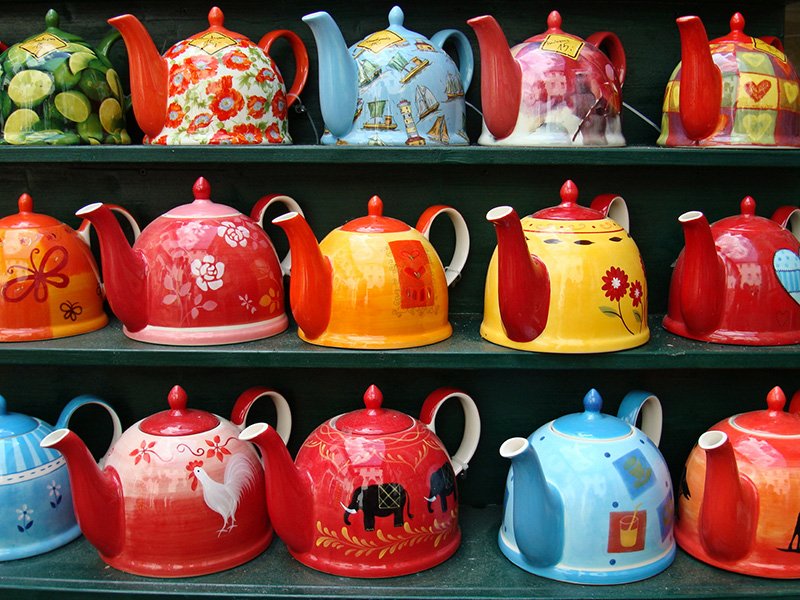
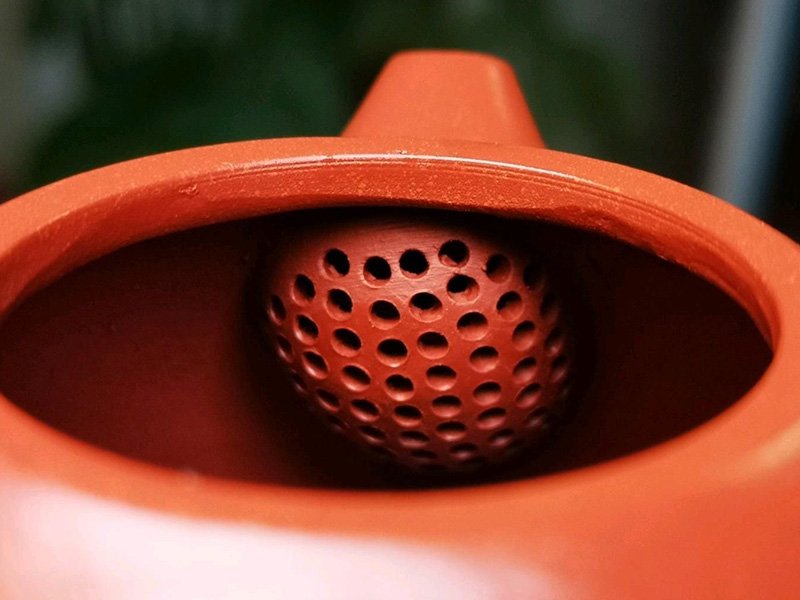

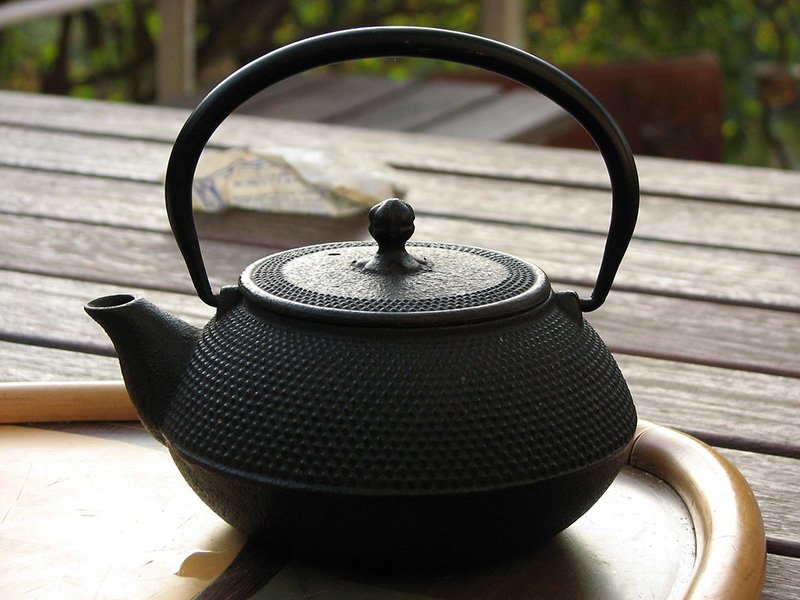
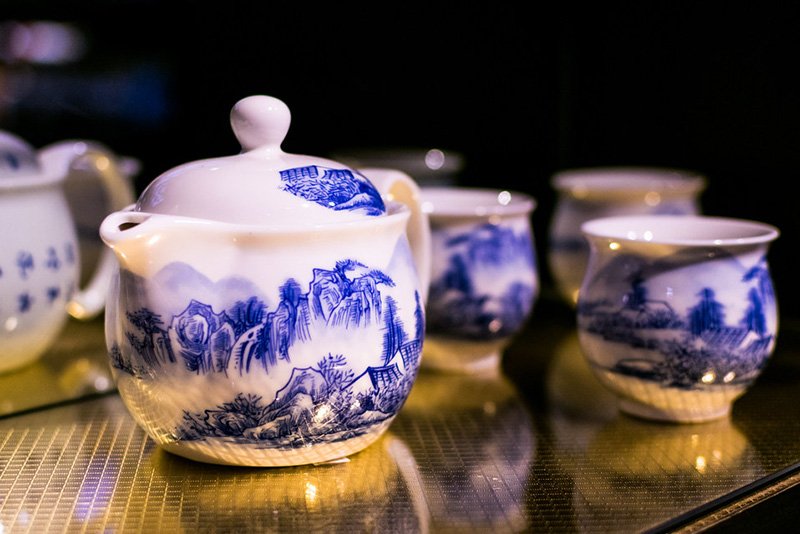
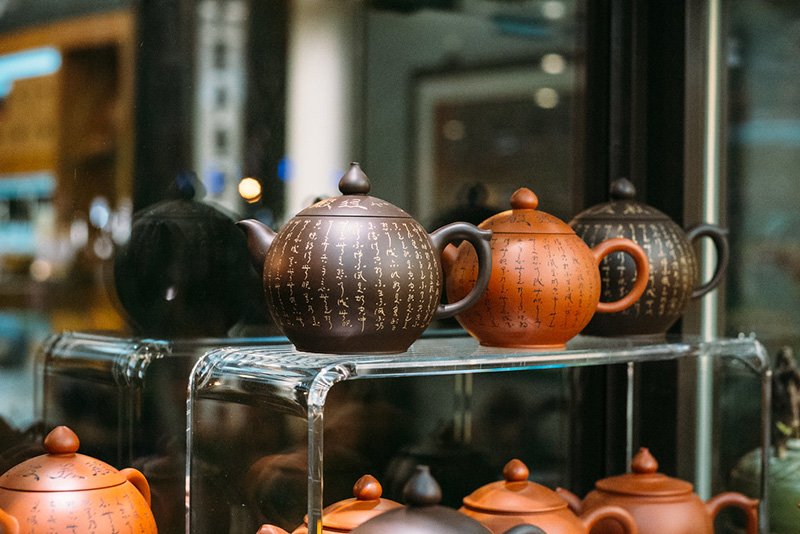
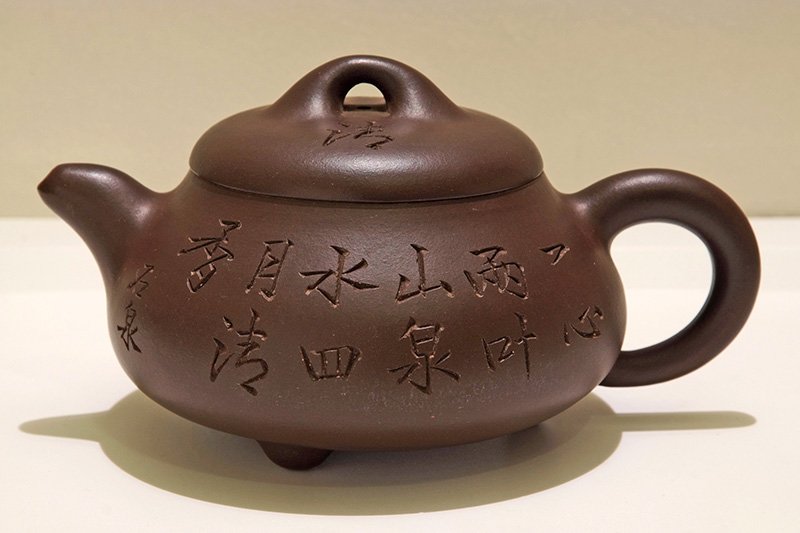
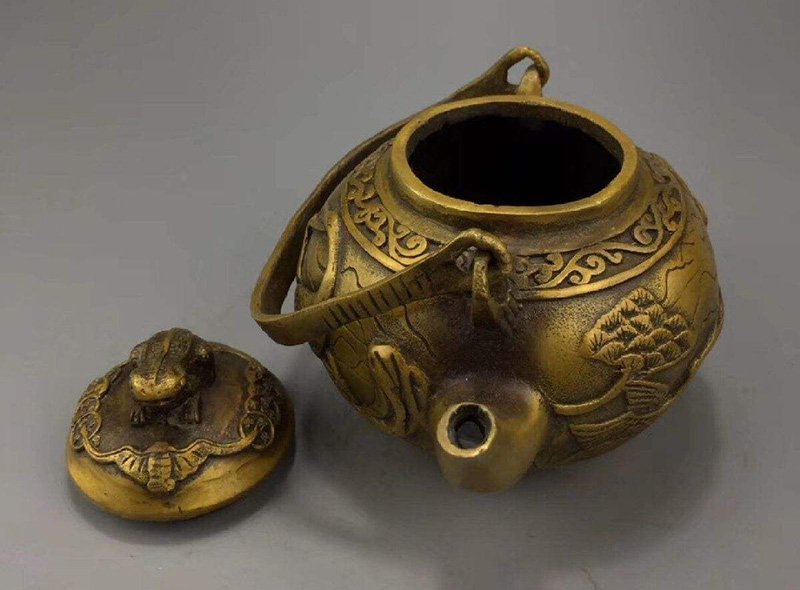
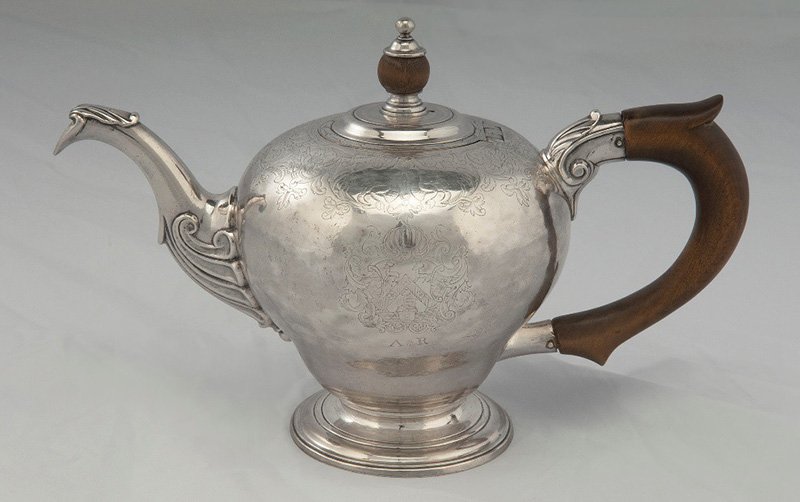
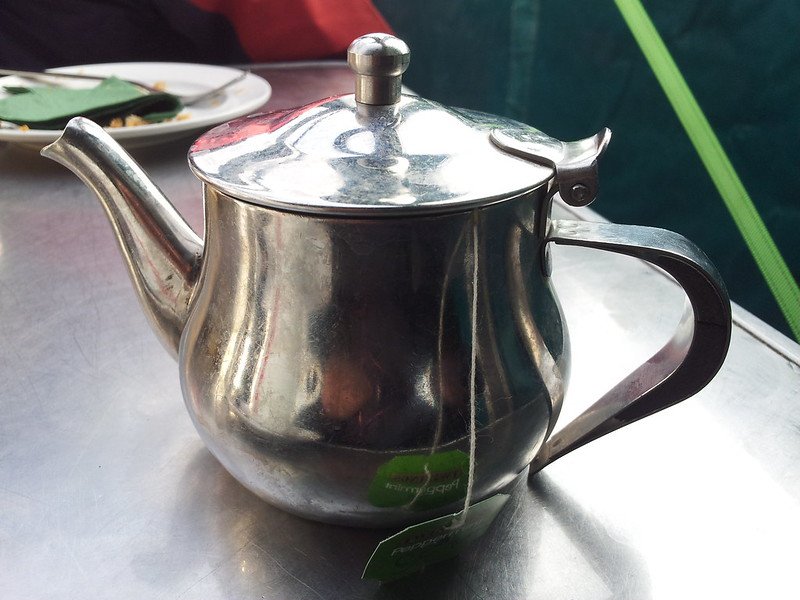
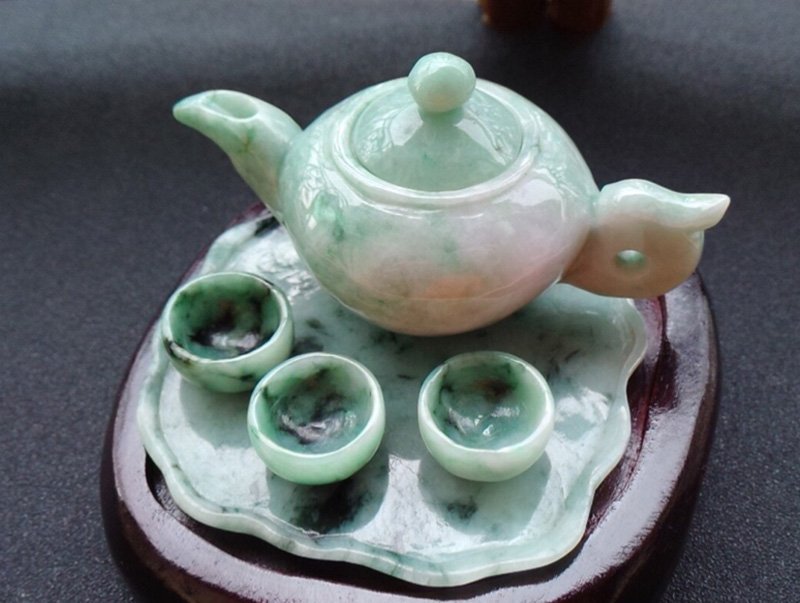
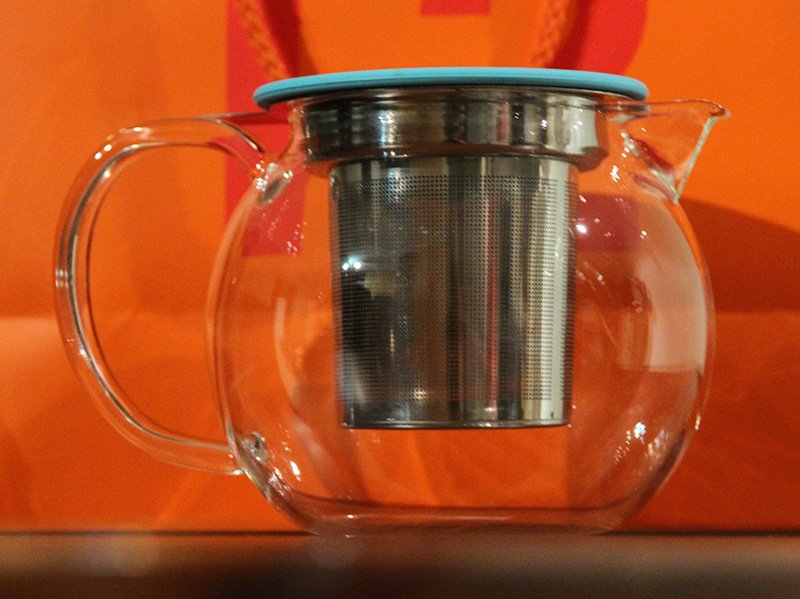
No comments:
Post a Comment